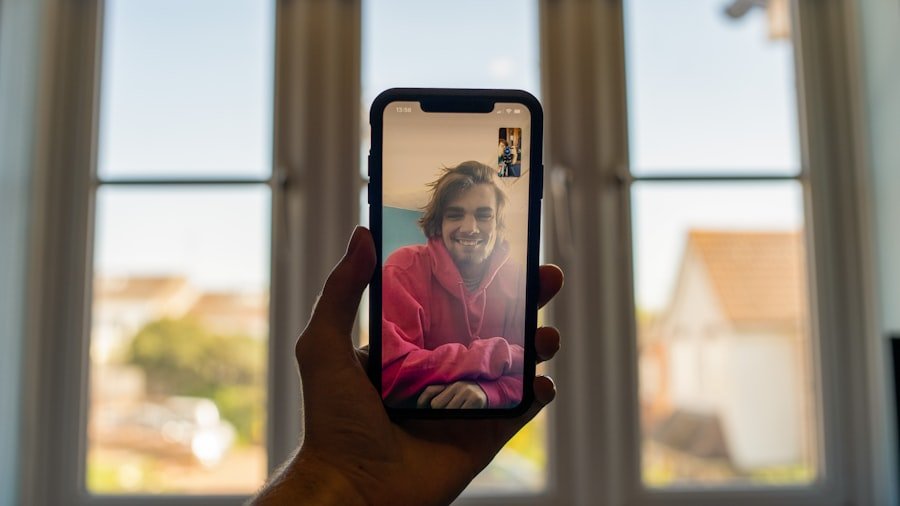FaceTime is Apple’s proprietary video and audio calling service that allows users to connect with one another over Wi-Fi or cellular data. Launched in 2010, it has become a staple feature for iPhone, iPad, and Mac users, providing a seamless way to communicate visually. The application is built into Apple devices, making it easily accessible without the need for additional downloads.
FaceTime supports high-definition video calls, which enhances the user experience by providing clear visuals and sound quality. The service is compatible with devices running iOS 4 or later, as well as macOS X 10.6.6 and later versions. The compatibility of FaceTime is primarily limited to Apple devices.
This exclusivity means that only users within the Apple ecosystem can utilize the service for video calls. While this creates a streamlined experience for iPhone, iPad, and Mac users, it also poses challenges for those who wish to connect with friends or family members using non-Apple devices. The lack of cross-platform functionality can be a significant drawback for users who have friends or family members using Android devices, such as those from Samsung.
Understanding these limitations is crucial for users who want to maintain effective communication across different platforms.
Key Takeaways
- FaceTime is a video calling app developed by Apple and is only compatible with iOS and Mac devices.
- FaceTime offers a more seamless and integrated experience for Apple users compared to other video calling apps.
- Samsung and iPhone users cannot FaceTime each other directly, but there are alternative cross-platform video calling apps available.
- Alternatives to FaceTime for Samsung and iPhone users include popular apps like Skype, WhatsApp, and Google Duo.
- To communicate with Samsung users from an iPhone, users can utilize cross-platform messaging apps like WhatsApp or Facebook Messenger.
Exploring the Differences Between FaceTime and Other Video Calling Apps
When comparing FaceTime to other video calling applications, several key differences emerge that highlight its unique features and limitations. One of the most notable distinctions is the integration of FaceTime within the Apple ecosystem. Unlike many third-party applications, FaceTime does not require users to create an account or download additional software; it is readily available on all compatible Apple devices.
This ease of access contributes to its popularity among Apple users, as they can initiate calls directly from their contacts list or through the Messages app. In contrast, many other video calling apps, such as Zoom, Skype, and Google Meet, require users to create accounts and often involve more complex setups. These applications are designed to be cross-platform, allowing users on different operating systems to connect seamlessly.
For instance, Zoom has gained immense popularity for its versatility in hosting large meetings and webinars, while Skype has been a long-standing player in the video calling space with features like screen sharing and call recording. The differences in user experience, accessibility, and functionality between FaceTime and these alternatives can significantly influence a user’s choice of communication tools.
Can Samsung and iPhone Users FaceTime Each Other?

The short answer is no; Samsung and iPhone users cannot use FaceTime to communicate with each other. FaceTime is an exclusive service designed for Apple devices, meaning that only users within the Apple ecosystem can connect through this platform. This limitation can be frustrating for individuals who own devices from different manufacturers but wish to maintain visual communication with friends or family members who use iPhones or iPads.
While Samsung users can initiate video calls using their native applications or third-party services, they cannot access FaceTime directly. This lack of interoperability highlights a significant barrier in cross-platform communication. Users looking to connect with friends or family members on different devices must explore alternative solutions that facilitate video calling across various operating systems.
Alternatives to FaceTime for Samsung and iPhone Users
| Platform | Compatibility | Features | Cost |
|---|---|---|---|
| Both Samsung and iPhone | Video calls, voice calls, messaging, group chats | Free | |
| Google Duo | Both Samsung and iPhone | High-quality video calls, cross-platform, simple interface | Free |
| Skype | Both Samsung and iPhone | Video calls, voice calls, messaging, screen sharing | Free for Skype-to-Skype calls, paid for other features |
| Facebook Messenger | Both Samsung and iPhone | Video calls, voice calls, messaging, group chats | Free |
Given the limitations of FaceTime in terms of cross-platform compatibility, several alternatives exist that allow Samsung and iPhone users to connect through video calls. One popular option is WhatsApp, which offers end-to-end encrypted video calling capabilities. With over two billion users worldwide, WhatsApp allows individuals to communicate seamlessly across different devices, including both Android and iOS platforms.
The app’s user-friendly interface makes it easy to initiate video calls directly from a chat window. Another viable alternative is Google Duo, which is specifically designed for high-quality video calls across various platforms. Google Duo supports both Android and iOS devices, allowing users to connect regardless of their operating system.
The app features a simple interface and offers unique functionalities such as “Knock Knock,” which lets users see a live video preview of the caller before answering the call. These alternatives provide effective solutions for Samsung and iPhone users seeking reliable video calling options outside of FaceTime.
How to Communicate with Samsung Users from an iPhone
For iPhone users looking to communicate with Samsung users, several methods can facilitate effective communication without relying on FaceTime. One straightforward approach is to use messaging apps that support cross-platform functionality. Applications like WhatsApp, Facebook Messenger, and Telegram allow users to send text messages, voice notes, images, and initiate video calls regardless of their device type.
To get started with WhatsApp, both parties must download the app from their respective app stores and create an account using their phone numbers. Once set up, they can easily chat or initiate video calls by selecting the contact from their list. Similarly, Facebook Messenger provides a familiar interface for those already using Facebook, allowing seamless communication between iPhone and Samsung users.
Using Third-Party Apps for Cross-Platform Video Calling

In addition to messaging apps like WhatsApp and Facebook Messenger, several third-party applications cater specifically to cross-platform video calling needs. Zoom has emerged as a leading choice for both personal and professional use due to its robust features and ease of use. Users can join meetings or initiate calls without needing an account, making it accessible for anyone with the app installed on their device.
Another noteworthy option is Microsoft Teams, which has gained traction in both corporate environments and personal use cases. Teams allows users to create channels for group discussions while also supporting one-on-one video calls. Its integration with Microsoft Office products makes it particularly appealing for those already using Microsoft services.
For casual video chats, apps like Houseparty offer a fun twist by allowing multiple friends to join a virtual room for games and conversations simultaneously. These third-party applications provide diverse options for cross-platform communication, ensuring that Samsung and iPhone users can stay connected regardless of their device preferences.
Tips for Seamless Video Calling Between Samsung and iPhone
To ensure a smooth video calling experience between Samsung and iPhone users, several tips can enhance connectivity and overall quality. First and foremost, both parties should ensure they have a stable internet connection—preferably Wi-Fi—to avoid interruptions during calls. A strong connection minimizes lag and improves audio-visual quality.
Additionally, it’s essential to choose the right application based on user preferences and device compatibility. Before initiating a call, both parties should confirm that they have the same app installed and are familiar with its features. Conducting a test call beforehand can help identify any potential issues related to connectivity or audio/video settings.
Another useful tip is to utilize headphones or earphones during calls to reduce background noise and improve sound clarity. This practice enhances the overall experience by minimizing distractions and ensuring that both parties can hear each other clearly.
Potential Limitations and Challenges of Cross-Platform Video Calling
While cross-platform video calling offers numerous benefits, it also presents certain limitations and challenges that users should be aware of. One significant issue is the variability in call quality across different applications and devices. Factors such as internet speed, device capabilities, and app optimization can all impact the overall experience.
Moreover, some applications may have restrictions on features based on the operating system being used. For instance, certain functionalities available on iOS may not be present on Android versions of the same app, leading to discrepancies in user experience. Additionally, privacy concerns may arise when using third-party applications that require personal information or access to contacts.
Another challenge lies in user familiarity with different platforms. Users accustomed to FaceTime may find it difficult to navigate alternative apps initially, leading to frustration during setup or usage. Overcoming these challenges requires patience and adaptability as users explore new communication tools.
The Future of Cross-Platform Video Calling
The future of cross-platform video calling appears promising as technology continues to evolve rapidly. With advancements in artificial intelligence (AI) and machine learning (ML), we can expect improvements in call quality, real-time translation features, and enhanced user interfaces that cater to diverse needs across platforms. Moreover, as remote work becomes increasingly prevalent, businesses are likely to invest more in cross-platform communication tools that facilitate collaboration among teams using different devices.
This trend may lead to further integration between various applications, allowing seamless transitions between personal and professional communication. As consumer demand for interoperability grows, developers may prioritize creating solutions that bridge gaps between ecosystems like Apple’s iOS and Google’s Android systems. This shift could result in more unified experiences for users regardless of their device preferences.
Security and Privacy Considerations for Cross-Platform Video Calling
Security and privacy are paramount concerns when engaging in cross-platform video calling. Users must be aware of potential vulnerabilities associated with third-party applications that may not have robust security measures in place. End-to-end encryption is a critical feature that ensures only the participants in a call can access the content being shared.
Applications like WhatsApp prioritize user privacy by implementing end-to-end encryption for all communications; however, not all platforms offer this level of security. Users should research the privacy policies of any application they choose to use for video calling to understand how their data will be handled. Additionally, it’s essential for users to enable two-factor authentication (2FA) where available to add an extra layer of security to their accounts.
Regularly updating apps also helps protect against potential vulnerabilities that could be exploited by malicious actors.
Making the Most of Cross-Platform Communication Options
To maximize the benefits of cross-platform communication options available today, users should remain open-minded about exploring various applications beyond FaceTime. Familiarizing themselves with multiple platforms allows individuals to choose the best tool based on their specific needs—whether it’s casual chats with friends or professional meetings. Engaging in regular practice with different apps can help build confidence in navigating their features effectively.
Users should also encourage friends or family members who own different devices to join them in exploring these alternatives together. Ultimately, embracing cross-platform communication options fosters connections among individuals regardless of their device preferences while enhancing overall communication experiences in an increasingly digital world.
If you are looking to learn more about the terms and conditions of using FaceTime between a Samsung and iPhone, you may want to check out the article on iPhone Info’s terms and conditions page. This article can provide valuable information on what to expect when using FaceTime across different devices.
FAQs
What is FaceTime?
FaceTime is a video and audio calling app developed by Apple Inc. It allows users to make video and audio calls between Apple devices such as iPhone, iPad, and Mac.
Can I FaceTime from a Samsung to an iPhone?
No, FaceTime is only available on Apple devices and cannot be used to make calls to non-Apple devices such as Samsung phones.
What alternatives are there for video calling between Samsung and iPhone?
There are several alternative apps that can be used to make video calls between Samsung and iPhone, such as Skype, Google Duo, WhatsApp, and Facebook Messenger.
Can I use FaceTime on a Samsung device?
No, FaceTime is exclusive to Apple devices and is not available for use on Samsung or any other non-Apple devices.
Is FaceTime free to use?
Yes, FaceTime is free to use for video and audio calls between Apple devices as long as you have an internet connection. However, data charges may apply if you are not connected to Wi-Fi.










